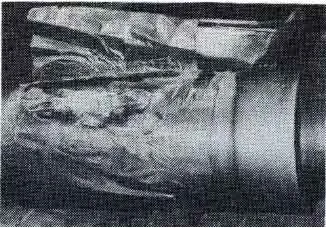There are many factors that affect the high-temperature flexural strength of magnesia carbon brick, the most important of which is the purity of raw material, carbon content, binder, matrix composition and organizational structure of magnesia carbon brick. The purity of raw material is relatively simple, the purity of magnesia is high, the crystal scale is large, the low melting point phase content distributed in the periclase grain boundary is low, the direct bonding degree is high, the high-temperature flexural strength is better; the purity of graphite The research on matrix composition, microstructure and other aspects is relatively complex, and it is also the most concentrated research field to improve the high-temperature flexural strength of magnesia carbon brick, which is roughly divided into the following three directions.
1、Add metal powder
In the aspect of improving the flexural strength at high temperature, the metal powders mainly include A1, Si, etc
① Al4C3 and SiC are formed by the reaction of metal Al and Si with graphite and resin carbon in magnesia carbon brick, strengthening the combination of carbon and carbon, and improving the strength;
② whiskers and fibers are formed in MgO-C brick by metal Al and Si, which strengthen the material matrix;
③ The formation of magnesia alumina spinel and the improvement of ceramic bonding
2、In situ formation of carbide, nitride and other whiskers
The improvement of high temperature flexural strength of MgO-C brick is usually achieved by in-situ formation of carbide and nitride whiskers.
Whiskers are generally one-dimensional crystalline materials of nanometer or submicron scale, with few internal defects, and the strength and modulus are close to the theoretical value of crystal materials. At the same time, the net distribution of whiskers in the brick or the pinning and locking effect in the microstructure of MgO-C brick also endow the material with a better mechanical properties Good strength. For example, yijingguang et al. Found that with the increase of heat treatment temperature, the high-temperature flexural strength and residual flexural strength of MgO-C brick added with metal Si powder and Al powder increased, while the flexural strength of the sample after heat treatment at 1400 ℃ was larger.
Through the analysis of microstructure, it was found that there was not only needle like AlN formation in the brick, but also inlaid on the surface of magnesia particles at 1400 ℃, At the same time, there are a large number of SiC whiskers and acicular β – Sin whiskers. In such a microstructure, when the material is subjected to external force, the stress can be transferred from the matrix to the whisker through the interface layer, and the whisker disperses the stress on the matrix and reduces the damage effect.
When the crack size of the sample under the action of thermal stress is small, the whisker plays a bridging role, When the crack increases, the whisker at the crack tip will be further destroyed, and the whisker will be pulled out of the matrix to consume energy. At this time, the pull-out effect will give the magnesia carbon brick high temperature mechanical properties
3、Generation or addition of nano carbon in magnesia carbon brick
Carbon nanotubes are new materials which appear in recent years, and their mechanical properties are very outstanding. Therefore, in the aspect of improving the high-temperature flexural strength and microstructure of MgO-C brick, some scholars have formed carbon nanotubes in the material by introducing catalysts and other ways, and achieved good results.
For example, we ì and other scholars modified phenolic resin and prepared low-carbon MgO-C brick by introducing Fe nano sheets. It is found that doping 0 A large number of carbon nanotubes with a diameter of 50-100nm and a length of micrometer are produced by the MgO-C brick with a mass fraction of. 5%. Compared with the sample without doping Fe nano sheet, the high-temperature flexural strength increases from 8.29mpa to 10.29mpa with a amplitude of about 24%, reaching the highest value. The presence of a large number of carbon nanotubes firmly locks the MgO particles.
When the stress is applied to the blank sample, the For the 0.5% doped sample, when the crack passes through the MgO particles, the carbon nanotubes can absorb and release the stress at the crack tip through the bridging and crack deflection mechanism due to its high strength and toughness.
In addition to the formation of carbon nanotubes in MgO-C brick, nano carbon is also introduced to improve the microstructure of MgO-C brick and improve the high-temperature flexural strength of materials. For example, on the basis of 3% mass fraction of graphite, by introducing different proportions of nano carbon and graphite, the high-temperature flexural strength (hMOR) increases with the increase of nano carbon content, and its value increases from 2.5MPa When it reaches 4.5MPa (0.9% mass fraction) and keeps constant when the nano carbon is further increased, as shown in Figure 21. Further analysis shows that with the increase of the content of nano carbon, the filling and compaction effect is better. At the same time, the nano carbon has very high reactivity and can form carbides at a higher rate when contacting with the gold additive, with stronger binding force and higher strength.





